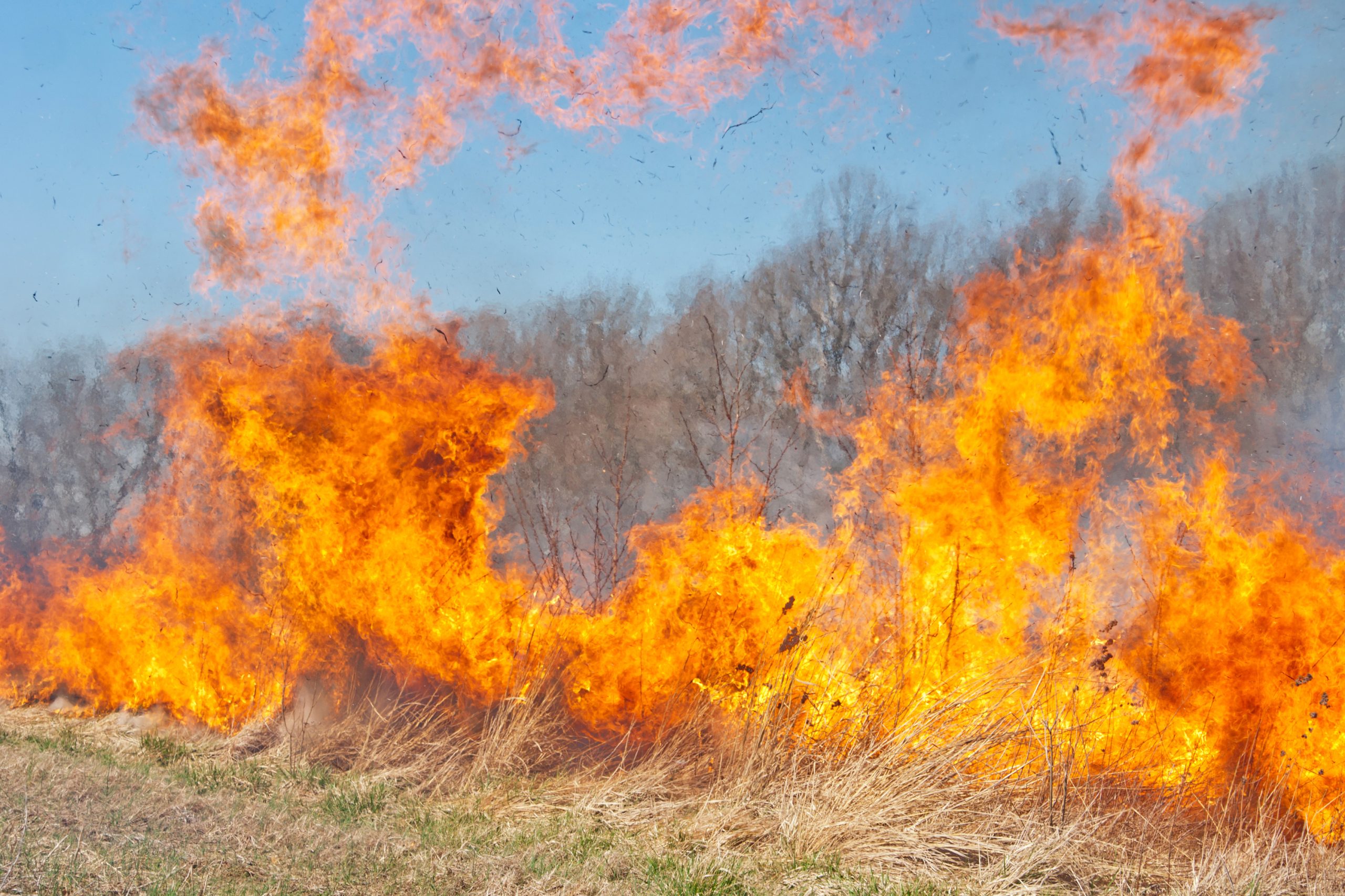Why use Prescribed Burning

Why use Prescribed Burning
I remember watching our field of switchgrass being burned for the first time. With a drip torch in hand, the volunteer fire department struck the first line of flame, and I watched as the flame slowly gained strength. The fire spread, low and steady at first, but then surging forward. As the heat intensified, so did the sounds. The crackling and popping intensified as the flames rapidly and violently grew and spread quickly consuming what had taken years to build up. I was shocked at the intensity in which the fire gained control and the intensity of the heat from the fire. In about 30 minutes, the CRP field was reduced to a blacked desert. However, we knew in a few weeks, green shoots would begin to emerge to create prime habitat for insects, birds, deer, and small game.
What are Native Warm Season Grasses?
Native warm-season grasses are grasses that grow primarily during the warmest months (late spring through summer) and are adapted to their native regions, often thriving in prairies, grasslands, and open fields. These grasses are drought-tolerant and have deep root systems, which help improve soil structure and resilience. Common types of warm season grasses here in Iowa include: switchgrass, big bluestem, little bluestem, and Indiangrass.
Native warm-season grasses provide essential habitat and food sources for a variety of wildlife. Many grassland bird species, like quail, pheasants, turkeys, and meadowlarks, rely on these grasses for nesting and cover. Ground-nesting birds benefit from the protection of dense grasses, and seed-producing grasses offer food sources.
Why Burn?
Why use prescribed burning? Well that’s because it has multiple benefits for your fields. Burning is particularly beneficial to native warm-season grasses because it helps to maintain their health, resilience, and growth by mimicking the natural fire cycles. In the past, prairie fires were common and promoted a thriving prairie. We introduced cool season grasses, which choked out the native warm season grasses. Prescribed burning will reduce the competition from cool season grasses and invasive weeds. Fire removes old, dead plant material, allowing sunlight to reach the soil and stimulating the growth of native warm season grasses.
Another benefit to burning is that it releases immobilized nutrients and makes them available. As plant material burns, nutrients like nitrogen, potassium and phosphorus are returned to the soil, enriching it for new growth. This nutrient cycling supports healthy and sustainable growth of native grasses.
Additionally, many species of wildlife, such as ground-nesting birds, benefit from the structure and diversity created by fire-maintained grasslands. Fire also opens up spaces and increases the availability of cover, which is essential for wildlife habitat. Why use prescribed burning? Well that’s because it has multiple benefits for your fields.
Planning a Prescribed Burn
Conducting a prescribed burn requires careful planning, the right weather conditions, and a solid understanding of fire behavior and safety protocols. There are a lot of details that go into planning a controlled burn, and you can usually call your local fire department to do it for you.
First, create a plan. You will want to burn late winter, to early spring. Make sure you are aware of nesting activity and get the burning done before nesting begins. Ideally, winds should be low so the fire doesn’t get away from you. You will want to define burn boundaries and firebreaks. Use natural barriers like rivers or creeks if possible, or create firebreaks by mowing or plowing around the area to prevent fire from spreading. You can also burn on the downwind side to create a safe “blackline” area, which helps prevent the fire from crossing boundaries.
Equipment and Safety
Next, you will need to evaluate the tools and equipment needed. Assemble necessary fire tools such as drip torches, fire rakes, paddles, leaf blowers, and water tanks. Ensure all personnel have safety equipment like gloves, and fire-resistant clothing. Double-check equipment, weather conditions, and ensure all crew members understand the burn plan, including escape routes and emergency protocols.
You should have a basic first aid kit on-hand with burn treatment in it. Also, know where the nearest hospital is should you need it. Burns and smoke inhalation are not something to take lightly.
Once the burn is complete, extinguish any lingering flames or smoldering spots, particularly along firebreaks and near any unburned areas. You will want to monitor the area closely for several hours, especially if the ground is dry and during windy conditions, to prevent flare-ups. High winds or extremely dry conditions can lead to fires that spread out of control.
Benefits of Controlled Burning
Native warm-season grasses provide essential habitat and food sources for a variety of wildlife. Many grassland bird species, like quail, pheasants, turkeys, and meadowlarks, rely on these grasses for nesting and cover. Ground-nesting birds benefit from the protection of dense grasses, and seed-producing grasses offer food sources. Other game such as rabbits and deer also use grasslands for cover and habitat.
When conducted carefully, prescribed burns are a powerful tool for managing land health, promoting native plant growth, and creating diverse wildlife habitats. Periodic burns can increase the resilience of native warm-season grasses and can greatly add to the wildlife cover and habitat on your property.
By Jake Hunter
January 2025
Looking for more information for property management try this one out
Or here is another article based on Perennial Cover establishment on your property.
Or if you were looking for January 2025s Digital Issue here it is
Looking for the Cattle/Dairy side?


